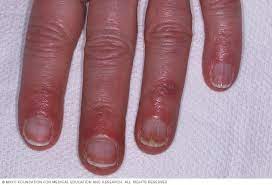
January 17, 2024
As North India grapples with a severe cold wave, individuals are facing discomfort due to plummeting temperatures, reaching as low as 3 to 0 degrees Celsius. Prolonged exposure to the cold is giving rise to a condition known as chilblains, affecting areas of the skin regularly exposed to chilly weather. While not life-threatening, chilblains can be irritating and painful, manifesting through symptoms like inflammation, redness, blisters, itchiness, and pain. The duration of this condition varies, typically lasting two to three weeks and healing faster in warmer weather.
Symptoms of Chilblains:
- Pain or stinging sensation
- Blisters or sores
- Swelling in fingers or other areas
- Changes in skin color
Causes of Chilblains: While experts haven’t pinpointed a specific cause, there are speculations about the condition’s origins. During winters, exposure to cold air and water, followed by rewarming through hot water and heaters, subjects the skin to temperature fluctuations. This can lead to the expansion of blood vessels, resulting in blisters or swelling as the body reacts to sudden cold and re-warming.
Risk Factors: Certain factors can exacerbate the risk of chilblains, including:
- Wearing tight or exposing clothing and shoes in cold, damp weather.
- Young women aged 15 to 30 are more susceptible.
- Individuals underweight or with a low body mass index.
- Residents of very cold and humid areas.
- Those with underlying medical conditions like Raynaud’s phenomenon, connective tissue disease, and SARS-CoV-2.
Prevention Strategies: To prevent and alleviate chilblains, consider the following tips:
- Limit exposure to the cold.
- Protect your skin at all times.
- Gradually rewarm your skin after outdoor activities.
- Wear loosely fitted clothes, mittens, scarfs, and socks for warmth.
- Keep your skin dry.
- Maintain a warm environment at home and work.
- Avoid smoking.
Understanding the symptoms, causes, risk factors, and effective prevention strategies can help individuals manage and mitigate the impact of chilblains during the winter season. Staying vigilant and taking necessary precautions can contribute to overall well-being and comfort in the face of extreme cold conditions.











